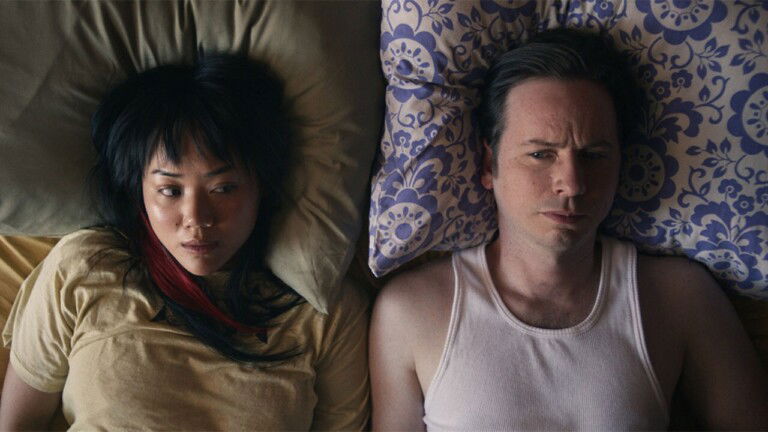Paying For It, premiering at TIFF 2024, was a very intriguing film because it was based on the 2011 graphic novel of the same name, written and drawn by Canadian cartoonist Chester Brown. The film was directed by Sook Yin-Lee, who was Brown’s ex-girlfriend. In a sense, Paying For It was an adaptation of the graphic novel but also an expanded version told from the female perspective. The graphic novel has been described as “a comic-strip memoir about being a john.”
Paying For It follows a long-term committed romantic couple in 1999 Toronto, Chester (Dan Beirne) and Sonny (Emily Lê). When Sonny wants to redefine their relationship, Chester, a shy and introverted cartoonist, starts sleeping with sex workers and discovers a new kind of intimacy in the process. Though it may seem wild for those who are in monogamous relationships, Paying For It takes some weird turns to display what makes each character unique and ultimately happy.
Paying For It is a work of cinematic autofiction, a comedy that is a kind of double-act of portraiture. Lee adapted Brown’s graphic novel memoir into a uniquely compassionate movie, especially in its handling of sex and intimacy. It is about love, sex, and non-monogamy for adults re-considering hetero-normative lifestyles. Lee pushes perceptions around consensual sex work, allowing sex worker perspectives to shine through.

It was a fascinating choice to have the author of Modern Whore and activist Andrea Werhun star in the film, as she was very raw in her performance too. Her chemistry with Beirne was off the charts. Beirne was also really good at selling how quirky and socially awkward his real-life counterpart was.
Lê had a major role in the film, being the film’s depiction of director Yin-Lee, and she was superbly sublime. Everything about her Much Music VJ acting was perfect for the real thing. Of course, the film changed Much Music to Max Music, maybe they could not get the rights. It was funny to see some of the real music videos of real-life artists who were blowing up at the time.
So much of the film was a nostalgia trip, from the locations to the way people interacted with one another. As someone who grew up as a kid in the early 2000s, I knew about some of the wild relationship stories that went about the city. Some even took place at dives like Sneaky Dee’s!
“Paying For It was an adaptation of the graphic novel but also an expanded version told from the female perspective.”
There was a lot of appreciation for the details of locations and hangouts in Paying For It, which included Buddha’s Vegan Restaurant and Weekend Characters, among the few. All of these locations are still open to this day! This is and is not similar to Scott Pilgrim’s version of Toronto. More so, both stories nailed the complicated relationships people who live in Toronto tend to have or go through in their lifetime—not speaking from personal experience!
Paying For It was a fun trip down memory lane for many millennials who grew up in Toronto or those who just passed through the city in the 90s/early 2000s. The film did a great job paying homage and respecting the truest perspectives of sex workers, johns, non-traditional relationships, and the overall relationship rollercoasters Toronto has been known for. This is a great film adaptation for those who enjoyed the graphic novel and a great watch for those searching for something beyond the norms—all tied up well within a 1 hour and 25-minute runtime.





